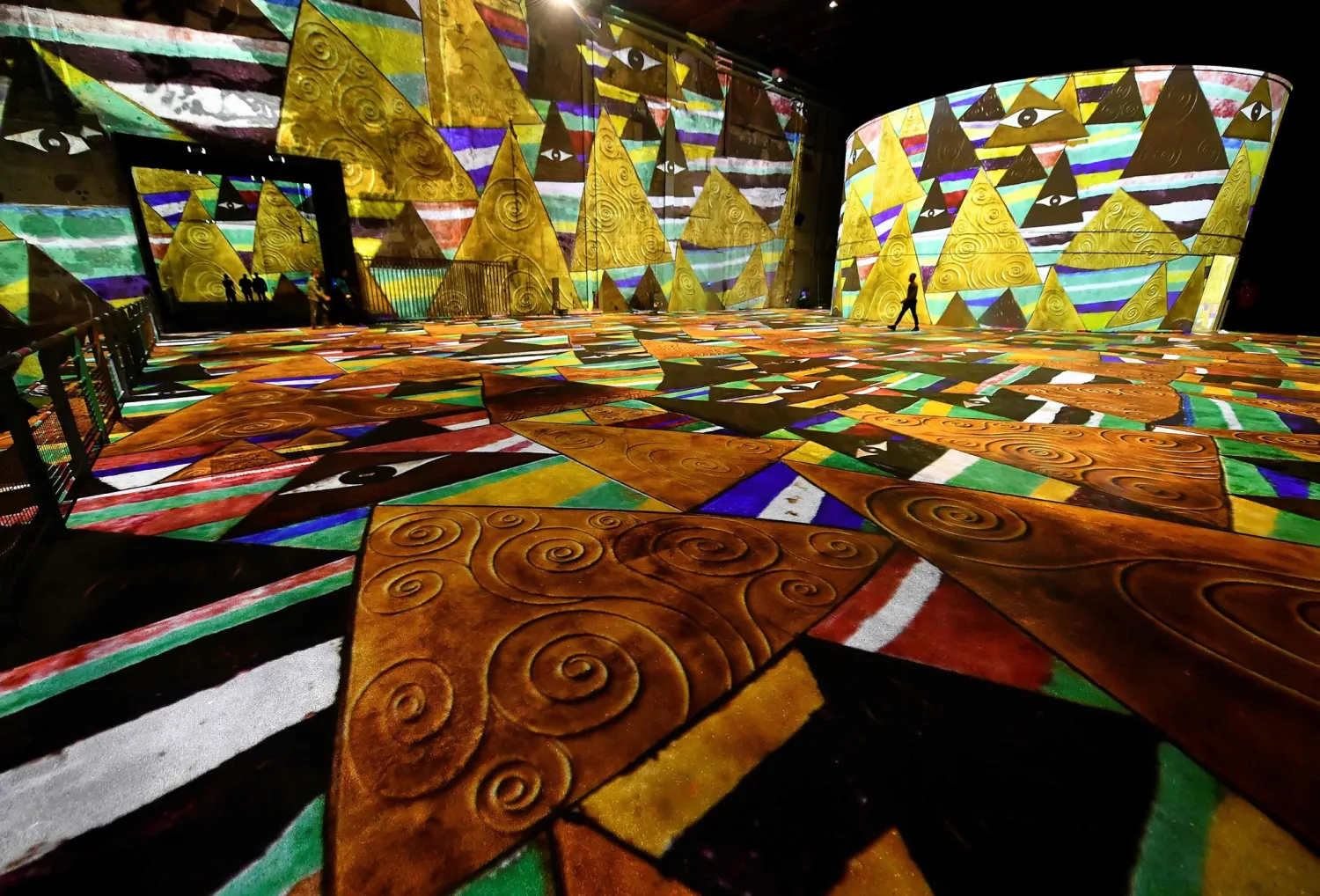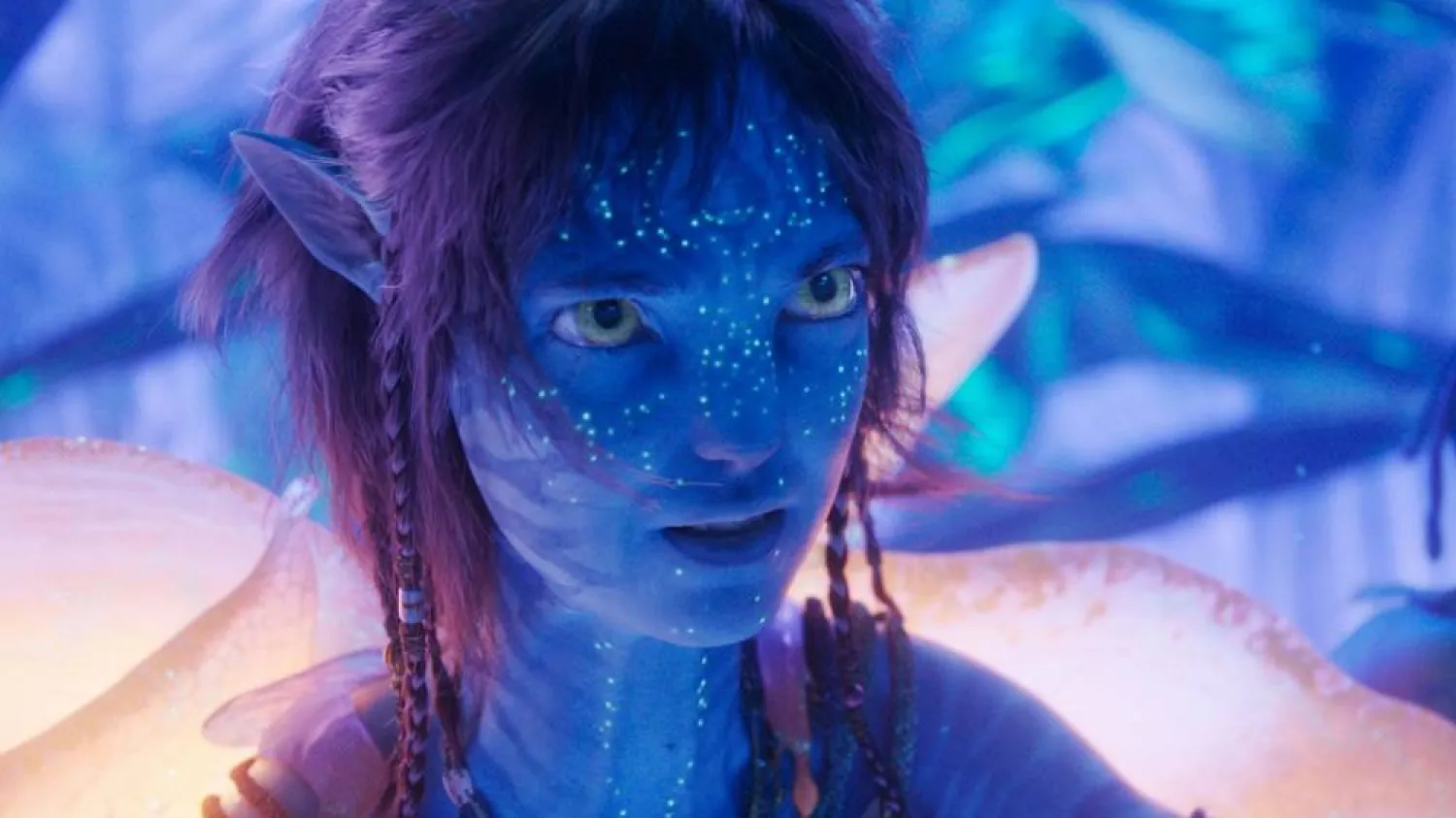On the walls inside of a former World War II submarine base, a huge Gustav Klimt tree expands its branches and a gold Paul Klee fish floats by. The bright, changing colors of these projections are reflected by four saltwater pools. Visitors walk along gangways, watching the floor-to-ceiling digital animations based on famous works by Klimt, Klee and Egon Schiele.
The show, called “Bassins de Lumières,” or “Basins of Light,” opened on June 10 after a delay caused by France’s coronavirus lockdown. It is the fourth immersive art space created by Culturespaces, a Paris-based company that manages cultural sites and produces digital exhibitions. Its second, “L’Atelier des Lumières,” has been a huge hit in Paris, drawing 1.2 million visitors in 2018 and nearly 1.4 million the next year.
The formula is straightforward: Culturespaces finds a structure with a notable history, like a former foundry or a bunker; renovates it; and adds offices, control rooms and a reception area. Then the venue opens with a flashy exhibition of digitized works by famous artists, projected onto the walls and animated to a soundtrack. A team of producers has so far created 15 digital exhibitions for Culturespaces, using works by artists including Marc Chagall, Yves Klein, Claude Monet and Vincent van Gogh.
Sylvie Pflieger, an associate professor at the University of Paris who studies the cultural economy, said in an email that Culturespaces was “the true pioneer of ‘immersive art,’ which transports the individual to a dreamlike location.”
With its “Lumières” experiences, Culturespaces is pushing the boundaries between entertainment and art, and between real life and virtual reality. Gone are the frames and the meditative stillness viewers are used to in museums, replaced by huge images that transform to the music of artists as varied as Beethoven and Janis Joplin.
Culturespaces is used to operating outside the norm: For many years, the company’s business has been the management of cultural and heritage sites in France for profit, an unusual setup in a country where the arts rely on significant state funding.
Though Culturespaces can replicate its digital shows around the world without the financial burdens of handling real-life artworks, there are other major costs: Preparing the Bordeaux submarine base, for example, cost 14 million euros, about $15.9 million. Some of what this money paid for is 80 speakers, 90 projectors in climate-controlled boxes, 75 miles of optical fiber cables and on-site servers handling approximately 10 terabytes of data.
Digital shows are only one part of what Culturespaces does. Founded in 1990 by Bruno Monnier, who worked at France’s culture ministry before that, Culturespaces also manages arts and heritage sites across France, such as the Villa Ephrussi de Rothschild in the South of France and the amphitheater in the city of Nîmes. Often, the owners of these monuments, chateaus or museums are towns and regions and, by extension, the taxpayers who live there.
A private takeover of a public institution is unusual in France. On average, cities spend 8 percent of their budget on culture, said Dr. Pflieger, the University of Paris professor. But arts funding on the national and regional levels has stagnated since the early 2000s, she added.
“Cities are having to handle more and more burdens and are therefore reducing their cultural budgets,” Dr. Pflieger said.
When Culturespaces takes over, its goal is profitability: Owners receive 5 to 15 percent of any profit they turn. Mr. Monnier, the company’s president, explained the four streams of revenue that his team focuses on: “First, classic visitor activities like guides and ticketing services. Second, the library and the gift shop. Third, the restaurant. Fourth, events.”
“Events” include exhibitions, and for some of the venues Culturespaces runs, such as the Maillol Museum and the Musée Jacquemart-André in Paris, those are crucial. The Musée Jacquemart-André is currently showing paintings by J.M.W. Turner on loan from the Tate museums in Britain.
Mr. Monnier said that drawing visitors with exhibitions had become harder over the years as heavy hitters like the Louvre in Paris have spent a great deal to produce blockbuster shows: The museum’s once-in-a-lifetime Leonardo show, which ran from November through February, had 1.1 million visitors. Competition has also come from museums funded by the luxury-goods billionaires Bernard Arnault, whose Fondation Louis Vuitton opened in 2014, and François Pinault, who is set to open a showcase for his art collection next year.
“These large exhibitions are expensive,” Dr. Pflieger said. “It is necessary to obtain loans from museums, particularly foreign ones; ensure the transport of works in good condition, which implies gigantic insurance costs, and so on. It is clear that small museums cannot do this.”
When “L’Atelier des Lumières” opened in Paris, it brought in a broader demographic than Culturespaces’ other venues, Mr. Monnier said: “People who never go to museums, younger generations, guys and girls who are 16-year-olds walking around hand in hand, families, grandparents, young parents.”
So-called immersive experiences are not necessarily new. Constance DeVereaux, the director of arts leadership and cultural management at University of Connecticut, said they were “something you find at Disneyland,” adding, “I was going to those in the 1960s.” Dr. DeVereaux said that though there was nothing wrong with turning art into entertainment, the format of “Lumières” might prevent viewers from thinking too deeply about what they saw. “There’s so much going on when you observe a work of art that could be dimmed by the giant digital experience,” Dr. DeVereaux said.
But Mr. Monnier thinks the scale of the “Lumières” shows is exactly why they leave an impression.
“You are completely inside. It’s completely emotional. It’s not just paintings on the wall,” he said.
Over the years, some in the art world have expressed fear of creeping privatization in countries where funding the arts has long been the responsibility of the government, but Christiane Hellmanzik, a professor of economics at the Technical University of Dortmund, said that applying a more business-oriented mind set to art was smart.
“From a pure economic perspective, if you bundle several ventures, that makes a lot of sense,” Dr. Hellmanzik said, referring to Culturespaces’ strategy of diversifying streams of income and creating a digital experience that can be replicated around the world, as well as a museum management technique that can be applied at different venues.
“That’s how Google works,” she added. “Why should the art world not operate like that?”
The New York Times









